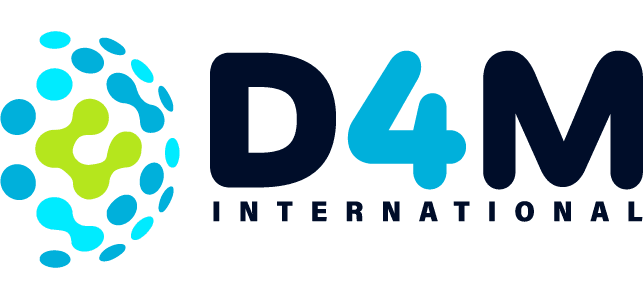In the world of manufacturing, learning the tier system and how they interlock to benefit OEMs is an inevitable step to achieving success; automotive is no different. Some tiers manufacturers create components and have less red tape, others manufacture large parts and are under strict deadlines. In order for all these branches to stay on task and on budget – while also reporting following OEM rules and legal guidelines – a contract must be created to keep the process running smoothly.
Continuing from last week’s interview, Alan further defines the tier system, how contract compliance in automotive manufacturing differs from other industries, AND talks about friction that can take place between OEMs and tier 1 while giving advice as to how to prevent it.
Jean: If we could narrow the conversation now on just friction points when it comes to contract compliance. Just to make a distinction here, when you refer to an automotive manufacturer as a “tier”, OEMs are often not considered to be tier ones themselves. They’re somehow like outside of this process, or are they considered tier ones?
Alan: Simplistic view, an OEM is they’re producing the vehicle that’s going to be sold to the public. The tier one is supplying parts and components to those automotive assembly companies. And those are the raw material inputs for those OEMs. Tier twos, supply parts or components to tier ones, tier threes to tier twos, etc.
Jean: So, again, when you refer to tiers, it’s like they’re like secondary to the OEMs.
Alan: One level below the OEM. Yeah. They’re supplying the OEMs.
Jean: So, when we’re talking about contract compliance, we’re specifically talking about people who make the parts for OEM.
Alan: Correct. There may be some contract compliance if a tier two supplier is supplying a tier one. They may have; as they say, stuff flows downhill. And the tier one will have a contract compliance requirement where their OEM, they’ll probably push a contract compliance requirement to their suppliers also.
Jean: When we’re referring to tier ones then, what are some of the issues when it comes to meeting contractual obligations when it comes to benefiting OEMs?
Alan: As I mentioned, data – it all hinges around data. The customer in this case, the OEM is going to require that parts or components that they are receiving have a certain level of documented quality. You’ve got that quality control they’re going to and that is everything from fit and finish to specifications for size and tolerances to any of a number of requirements, depending on the kind of part that it is.
Alan: And being able to assure that quality as well as the numbers and delivery dates that those customers are demanding are all part of the contract. In addition, the production cycle from the beginning to the end needs to be recorded. If you have a part that you’re delivering to an OEM and they discover an issue with it, or there’s a recall for any particular issue.
Alan: The manufacturer, the OEM, will need to be able to quickly identify what parts were put into which end products to identify the source of the problem – as opposed to going through paper records. If they’re able to identify a particular issue based on a manufacturing or engineering issue, they are then able to determine quickly where products/parts with those potential problems were used so that a recall can become as narrow as possible. A recall is obviously very expensive and it is a big liability for a company. Being able to do that efficiently and effectively is pretty important.
Jean: And just out of sheer curiosity, so tier ones and automotives, how are they unique when compared to, say tier one in pharmaceuticals or other things? Are there tighter deadlines? Is there much of a distinction there in terms of contract compliance?
Alan: The contract compliances will be similar. The automotive manufacturing market is some of the most advanced manufacturing on the planet.
Alan: And the coupling between the production that an OEM is executing on, and the supply chain is extremely tight. The industry has led the charge in supply chain operations and being able to deliver parts or components right on time – not way ahead of time, not behind time, on time – in the quality that is demanded so that the manufacturer can have consistent products. Oems want a car that operates the same way every time And – each of the parts and pieces – need to be delivered to them the same way every time.
Alan: Assuring that and the volumes that they’re dealing with is some of the stuff that makes the automotive market special in this regard.
Jean: Because of this high volume and this precision that is often required – not to mention tight deadlines I’m assuming that there can be friction between the OEMs and the tier ones.
Alan: Yes. And there are people whose job it is to apply oil to that friction on a daily basis.
Jean: I would assume as much. But would you have any tips or strategies to avoid this friction or maybe list some common pitfalls that take place within those two tiers?
Alan: Manufacturing is changing the advent of industry 4.0, which is going to be a data driven, highly interconnected digital manufacturing process can in and of itself use the power of software and technology to streamline the production process as much as possible and improve consistency, quality, utilization and inventory and so it is a way to accommodate the speed at which the automotive industry typically operates. Again, you have a plant in Toledo manufacturing. Parts that an OEM is going to assemble in Fort Wayne, Indiana.
Alan: And, every day, the Toledo supplier is sending a truck to the plant in Fort Wayne with just enough inventory to produce the trucks that they’re going to produce that day. So, it is a very tightly coupled operation. You noticed that during the start of the pandemic there were some supply chain issues – especially in the automotive industry around electronic components – where they just had a real problem getting some of that stuff? Understanding then how to react to that from a production planning perspective.
Alan: When you had those material shortages, you try and keep the operations running and what you have to do, it becomes pretty complex when something in that tightly coupled network needs products on time starts to break. And being able to have a computer that can think faster than us to help with that process has been immeasurable.
For more interviews/success stories, be sure to check out the official D4M International YouTube page!
D4M is a privately owned company specializing in leveraging digital technologies to accelerate manufacturing clients to their transition to Industry 4.0. With long tenure and hundreds or successful projects, we are confident that our approach and experience provides the roadmap to help bring clarity and efficiency to your manufacturing operation.
To find out how we can help with your SAP environment, or to learn more about how we rolled out SAP to 60 locations in 60 months, reach out to us today. Contact form and office numbers listed below.
We look forward to partnering with you!






